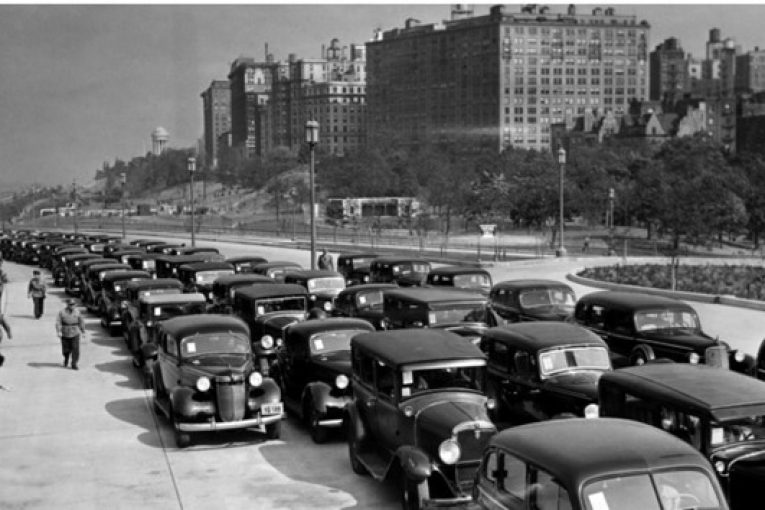
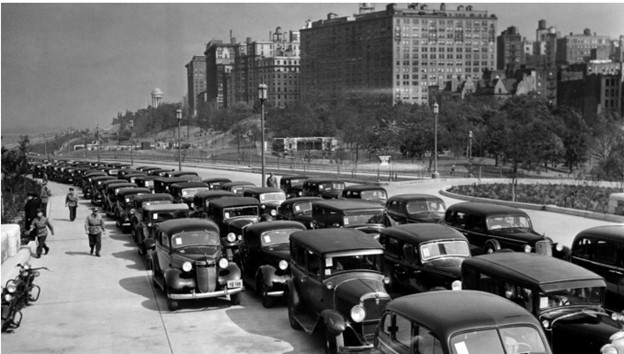
TO Mayor Will Arnold and Members Davis City Council
From: Judy Corbett, Professor Steven Wheeler, Alan Pryor, Mark Huising, Roberta Millstein, Jim Zanetto, Colin Walsh, Alan Hirsch, Robert Thayer
Our group supports walkable, bikeable, compact infill development near transit, shopping, community amenities, and jobs. Building a wider freeway to increase the auto capacity is contrary to our over-arching goal of reducing greenhouse gas (GHG) emissions.
It is well-established science that wider freeways do not fix congestion but do increase driving and greenhouse gas emissions (GHG), as noted in the well-researched Davis Enterprise article of June 2. The travel forecast model developed by the UC Davis Institute for Transportation Studies (and accepted by Caltrans and the Yolo County Transit District) estimates that the I-80 freeway widening will generate enough car travel (178 million miles a year !) to equal the GHG emissions that would be generated by adding a new auto-centric city the size of Winters.
Will Davis Decide to Ignore Climate Emergency?
On Tuesday, June 6 Caltrans will ask the Davis City Council to make use of our GHG-reducing projects to justify the additional GHG that would be caused by the I-80  widening.
widening.
Apparently, if we allow Caltrans to justify the freeway expansion on our stretch of highway by using our City’s current and future plans to reduce GHG emissions, Caltrans is offering to pay us back by giving the City some small financial support to help the developers at Nishi and downtown. If we allow them to use our City’s infill efforts to justify the increased VMT on our highway, how many of more these projects would we have to build to make up for the increase in emissions on our highway?
The backstory on this was not described to the public and Council in the staff memo for this agenda item. Caltrans is reviewing all local cities CAAPs to find projects planned for car-free living; it can use them to offset the vehicle miles traveled (VMT) from the I-80 widening. VMT is now the accepted measure of the environmental impact of driving, as codified by Senate Bill 743, (adopted in 2013 and implemented in 2020 (link). In fact, the widening project will be one of the first projects that is subject to this law, which requires Caltrans to address VMT in its California Environmental Quality Act (CEQA/EIR) analysis for the I-80 widening.
Most troubling is the city staff memo does not mention our City’s resolution declaring a Climate Emergency. This resolution lead to our recent adoption of our Climate Action and Adaptation Plan (CAAP) to reach carbon neutrality by 2040. This codified as policy a sense of urgency, which seems to have been lost.
Allowing our CAAP infill projects to be subverted means we will miss our zero carbon goal by a wide margin. If we are serious about the Climate Emergency we declared, we need to act with urgency: we cannot continue to endorse the same transportation practices that are proven time and again not to resolve congestion, as UC Davis and other studies have shown.
We, therefore, urge the Davis Council on Tuesday to take the following actions:
- Do not send a letter to Caltrans stating we are willing to trade our city’s urgency in address climate change in exchange for Caltrans money Signing a letter signals our CAAP—and our children’s future is up for sale at some, (yet unnamed) price. This would be an embarrassment for our community to even hint at this for any price.
- Ask Caltrans instead to address I-80 congestion by studying transit as EIR alternatives, not just as mitigations. Ask Caltrans to first finish its “80 Comprehensive Multi-modal Corridor Plan” (from the Vallejo Bridge into Sacramento County) that seems to be stuck in a draft stage since January 2022. Until we have a true corridor plan, not a study only restricted to Yolo County, mass transit improvements for the full Capitol Corridor and a robust public bus service into Solano County will always be seen as an afterthought.
+ + + +
The City Council and much of the community supports infill and wants alternatives to driving. Yet if the City Council enables the I-80 freeway widening, this negates the benefits of infill because it will enable sprawl in the region as a whole.
Davis City Council, like other cities in the region, has both the opportunity and the responsibility to make it clear to Caltrans that mass transit and walkable communities are a priority, not a mitigation to offset their projects.
Davis Alliance for a Sustainable Future



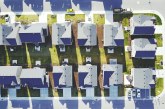
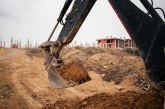
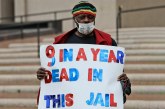
City council is asked to make a decision void of facts on Tuesday.
Like for example, what is the estimate of GHG gas generate by the wider freeway vs the city’s CAAP?
By looking at Davis CAAP document you can see the freeway increase is equal to 1/2 the total GHG reduction planned for 2030. This approximate number is easily generated from UC Davis award winning Travel Model- a forecasting model that Caltrans has accepted as a good approximation of induced demand. The VMT for 34 lane miles is (+/- 20%) 178 Mil miles VMT/yr – convert it to GHG with formula 0.79 lb co2/mile– to Metric ton co2 via 2205 lb/ MT = 72,000 MT cCO2. (co2/mile from per epa). Yet no one did this simple math or use the publicly available model on the website,
Result is council is asked to make a decision context free.
IN defense, the city says Caltrans has not offered the city any background document such as this. They have not even released their slides of presentation in advance of the meeting. And public records requests on this mitigation proposal have all but been ignored. When this was presented to BTSSC 3 weeks ago they asked for more information.
This is poor public process at the least.
Amen to this.
One of the greatest challenges before us from a planning perspective is “breaking up with the automobile” Cars are SO ingrained in our everyday life and in our culture that it is hard to even explain to most people just how badly we have developed our society around these vehicles – to the extent that most people don’t even see an alternative being possible.
The hard truth is that traffic, to some small extent, is a GOOD thing, because people who DONT want to sit in traffic will eventually make different choices.
After commuting for 10 years and spending all of that money, all of that time away from my children, I have resolved to NEVER have to waste time and money in that way again… So I have re-ordered my life so that I can live and work in the same town, ride my electric skateboard to work, and my family gets by quite well only having ONE car. It DOES work, and my life is much better for it. But I know that many people see ditching their cars as something unthinkable.
The only way to get people out of cars and onto bikes is to make biking easier and faster ( and safer ) and make driving cars HARDER. That means not only NOT widening our freeways, but potentially intentionally slowing traffic down and taking lanes away from cars as has successfully been done on many surface streets here in town.
OI know its unthinkable to many, but it’s VERY important that we start working in that direction, and explaining to our peers exactly why.
Honestly – none of you should be supporting Covell Village II, then.
400 acres of primarily single-family sprawl is what creates “freeway demand” in the first place.
Tim
This is how induced demand works. to wider freeway encourage not just drivng but different life style choices.
Tom Stollard, Chair of Yolo Transportation District (and Woodland council person) has argued we need to widen I80 to “just be practical.” At Yolo TD meeting he shared s an personal example of need, he was struck in Traffic on Friday night when he want to drive to Sacramento for a meal out.
I can’t think of a better example of discretionary travel that induced demand travel phenomon would impact: wider freeway would encourage more travel and GHG production.
Predictably, I am waving my hands wildly in the air in appreciation!
There’s some backstory, sidestory and related which is probably not mentioned due to space limitations (wordplay intentional):
* For years the project promised a dedicated and new bicycle-pedestrian bridge across the ‘Bypass. In 2020 – when I was still on the BTSSC – the notification that it was dropped some months earlier was only indirectly mentioned in a summary for a BTSSC meeting by the primary liaison for the City of Davis at the time, Brian Abbanat (former Senior Planner; now he’s in a similar role for Yolo County and co-presenting Tuesday evening.) A couple of years later when this was mentioned to the other co-presenter, YCTD head Autumn Bernstein, she said it was not funded: I believe that the aggregate truth – to be precise as possible – is that Caltrans dropped it, never told any of the local interested groups about it (e.g. Bike Davis, Davis Bike Club) through their liaison Abbanat and that it wasn’t part of the initial, funded proposal to the Federal Government.
* I arrived in town after Nishi 1.0 (retroactively supported a concept that would involve a complete redesign of the 80-Richards interchange inclusive of a parking structure and Park & Ride for regional buses which would have minimal impacts on Richards) and was against Nishi 2.0 because I don’t think there should be housing (buildings with windows people open!) so close to the noisy and arguably otherwise-polluting interstate, but it’s not why I am suggesting that the proposed “multi-modal” mitigation is a fallacy… anyway here goes: Use Google Maps (etc) to look at Pole Line over 80. It’s incredibly long because it has to go very high over the railway tracks, more so than to get over 80 itself (to better understand this, picture the crossings over 113 which are much lower as they only need to accomodate trucks. First of all, this – and all the over-crossings of 80 in town – are simply not comfortable and suitable for people on normal bicycles, especially carrying children. 80 is a wall for people on bikes. The over-crossings have around a 6 to 7% grade, nearly twice as high as the Dutch standard: So to make it comfortable for hundreds of people to go from Nishi to campus it would have to be nearly twice as long. Look again at the view of 80 at Pole Line: There’s no space for this unless it’s very circuitous and indirect and lands behind Shrem or just by the entrance to Solano Park from Old Davis Rd. And that’s just for cycling. Imagine walking this at least twice a day. Motor vehicles including buses can obviously do this, s in sum I feel confident in saying that since motor vehicle, bus, bicycle, walking access is part of the agreement for Nishi, and Union Pacific forbids an under-crossing, there’s no way to build Nishi unless it’s returned to the voters. As far as this mitigation goes: There’s nothing to mitigate here as nothing can be built for mitigation.
* It’s no secret that Mayor Will Arnold is the Media Relations Manager for Caltrans. Should he recuse himself from the discussion for ethical reasons? Should he be signing a letter to support a project he would then have to (continue to) work on at Caltrans? I don’t think he can recuse himself from the communications hierarchy there. Note how the project communicates things, it’s spin, lack of backstory. At a public presentation hosted by Cool Davis a couple of months ago, Bernstein said that Yolo County had convinced Caltrans to do the managed lanes variant. I think that they had decided this already, and I would not be surprised if they try to offer the bike-ped crossing of the Yolo Bypass as a carrot. Arnold’s job description at LinkedIn is: “Caltrans Headquarters Public Affairs, Office of the Director – Duties include managing media inquiries and press relations, designing and executing effective communications strategy, and writing/editing communication plans, press releases, talking points and social media content.”
Once again we hear the familiar Davis drumbeat of: If we don’t build it they won’t come.
But look no further than UC Davis that has added thousands more students despite the city adding an inadequate amount of new housing. Or look to Dixon that is going to build the Innovation Center/Business Park that Davis voters turned down. Or look to Woodland where all those previous Davis residents bought homes. The current fallacy in the authors logic is that Caltrans will do something different if Davis doesn’t take the mitigation payoff money. They won’t. Caltrans will simply spend the mitigation dollars elsewhere.
Perhaps an argument could be made that the mitigation money should be spent differently than is currently being proposed. I don’t know what the best use of the mitigation money will be but the argument that I-80 shouldn’t be widened will fall on deaf ears in Sacramento and around the rest of the region. If Davis says no to the money Caltrans will simply buy its mitigation credits elsewhere.
As for Davis traffic itself the authors seem to have forgotten that Davis traffic has the Waze but not the means to deal with the congestion generated by traffic jams on I-80.